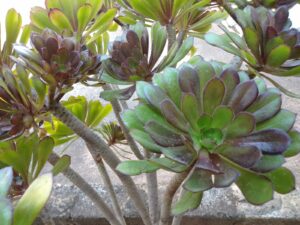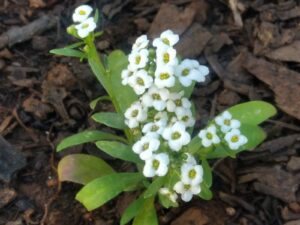Surinamese stickpea is a tropical shrub that belongs to the legume family. It’s native to northern South America, especially Suriname, hence its name. Because of its showy flowers that resemble fluffy balls, it’s sometimes called pink powder puff. This evergreen plant can grow relatively tall, with complexly branched stems and bipinnate leaves that close and droop at night. The flowers contain numerous white-based stamens that are pink at the top. It’s believed to serve medicinal purposes because it has antioxidant, anti-inflammatory, anti-cancer, and antimicrobial properties.

Tree Aeonium
Tree aeonium is a fascinating succulent that belongs to the Crassulaceae family. It’s native to the Canary Islands and Africa,



